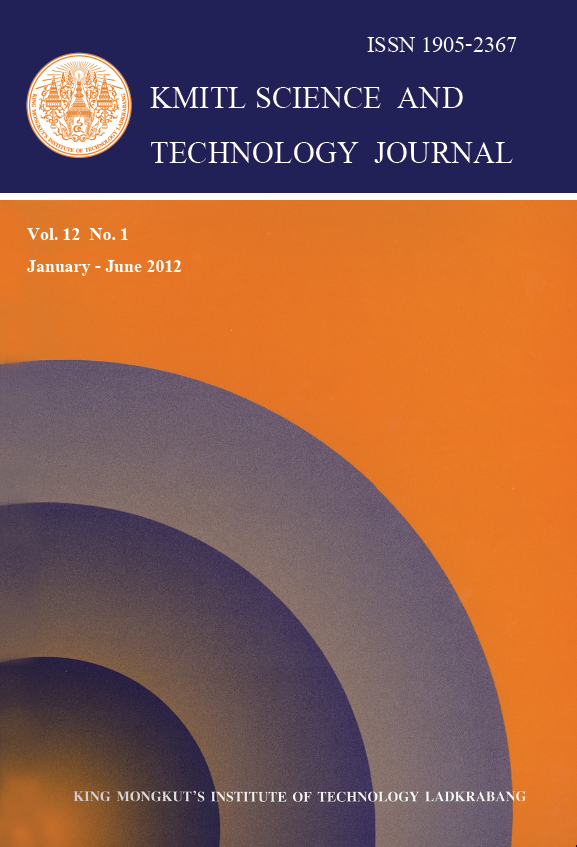The Selection Method of Fuzzy Composite Operators Based on the Clear Field
Main Article Content
Abstract
Fuzzy comprehensive evaluation is one of the most effective evaluation methods. Fuzzy operations are based on fuzzy composite operators. Through an empirical analysis, we found that, with the same data set, using different fuzzy composite operators might get consistent results or inconsistent results. Therefore, a reasonable selection of fuzzy composite operators is one of the most important issues when conducting a fuzzy comprehensive evaluation. In the extensive literature, there is a clear gap on the general selection method of fuzzy composite operators. This paper analyzes the properties of five typical fuzzy composite operators, and proposes the definitions of the positive field, the negative field, the fuzzy field, the data field and the data point. Furthermore, this paper presents a classification method of the fuzzy composite operators based on the size of clear field and proposes a selection method of fuzzy composite operators based on the data field for Fuzzy evaluation applications.
Keywords: Fuzzy comprehensive evaluation; Fuzzy composite operators; Clear field; Fuzzy field; Data field
E-mail: yangyixcn@163.com
Article Details
Copyright Transfer Statement
The copyright of this article is transferred to Current Applied Science and Technology journal with effect if and when the article is accepted for publication. The copyright transfer covers the exclusive right to reproduce and distribute the article, including reprints, translations, photographic reproductions, electronic form (offline, online) or any other reproductions of similar nature.
The author warrants that this contribution is original and that he/she has full power to make this grant. The author signs for and accepts responsibility for releasing this material on behalf of any and all co-authors.
Here is the link for download: Copyright transfer form.pdf
References
[2] Gao, Q. S. 2005. Defeets and overcoming of Zadeh’s fuzzy set theory: C*-fuzzy set theory,Journal of University of Science and Technology Beijing, 27(5), 513-519.
[3] Bellman, R. and Giertz, M. 1973. On the analytic formalism of the theory of fuzzy sets. Information Sciences, 5, 149-156.
[4] Yager, R. R. 1980. On a general class of fuzzy connectives. Fuzzy Sets and Systems, 4(3),235-242.
[5] Yager, R. R. 1988. On ordered weighted averaging aggregation operators in multi-criteria decision making. IEEE Transactions on Systems, Man and Cybernetics, 18(1), 183-190.
[6] Wang, P. Z. and Li, H. X. 1996. Theory of fuzzy system and fuzzy computer. Beijing: Science Press.
[7] Fodor, J. C., Yager, R. R. and Rybalov, A. 1997. Structure of uninorms. International Journal of Uncertainty, Fuzziness Knowledge-based Systems, 5(4), 411–427.
[8] Xiao, G. C. 2005. Ranking fuzzy operator. College Mathematics, 21(6), 91-94.
[9] Li, Y. L., Gao, Z. G. and Han, Y. L. 2006. The determination of weight value and the choice of composite operators in fuzzy comprehensive evaluation. Computer Engineering and Applications, 42(23), 38-42.
[10] Radzikowska, A. M. and Kerre, E. E. 2005. Characterisation of main classes of fuzzy relations using fuzzy modal operators. Fuzzy Sets and Systems, 152(2), 223–247.
[11] Ye, Y. C., Ke, L. H. and Huang, D. Y. 2006. System comprehensive evaluation technology and applications. Metallurgical Industry Press.
[12] Liu, L., Zhou, J. Z., An, X. L., Zhang, Y. C. and Yang, L. 2010.Using fuzzy theory and information entropy for water quality assessment in Three Gorges region, China. Expert Systems with Applications, 37(3), 2517–2521.
[13] Ying, H. 2003. A general technique for deriving analytical structure of fuzzy controllers using arbitrary trapezoidal input fuzzy sets and Zadeh AND operator. Automatica, 39(7),1171-1184
[14] Li, L. J. and Shen, L. T. 2006. An improved multilevel fuzzy comprehensive evaluation algorithm for security performance. The Journal of China Universities of Posts and Telecommunications, 13(4), 48-53.
[15] Chen, H. W. and Chang, N. B. 2010. Using fuzzy operators to address the complexity in decision making of water resources redistribution in two neighboring river basins. Advances in Water Resources, 33(6), 652–666
[16] Süer, G.A., Arikan, F. and Babayigit, C. 2009. Effects of different fuzzy operators on fuzzy bi-objective cell loading problem in labor-intensive manufacturing cells. Computers and Industrial Engineering, 56(2), 476–488.
[17] Shen, G., Lu, Y., Wang, M. and Sun, Y. 2005. Status and fuzzy comprehensive assessment of combined heavy metal and organo-chlorine pesticide pollution in the Taihu Lake region of China. Journal of Environmental Management, 76(4), 355–362.


